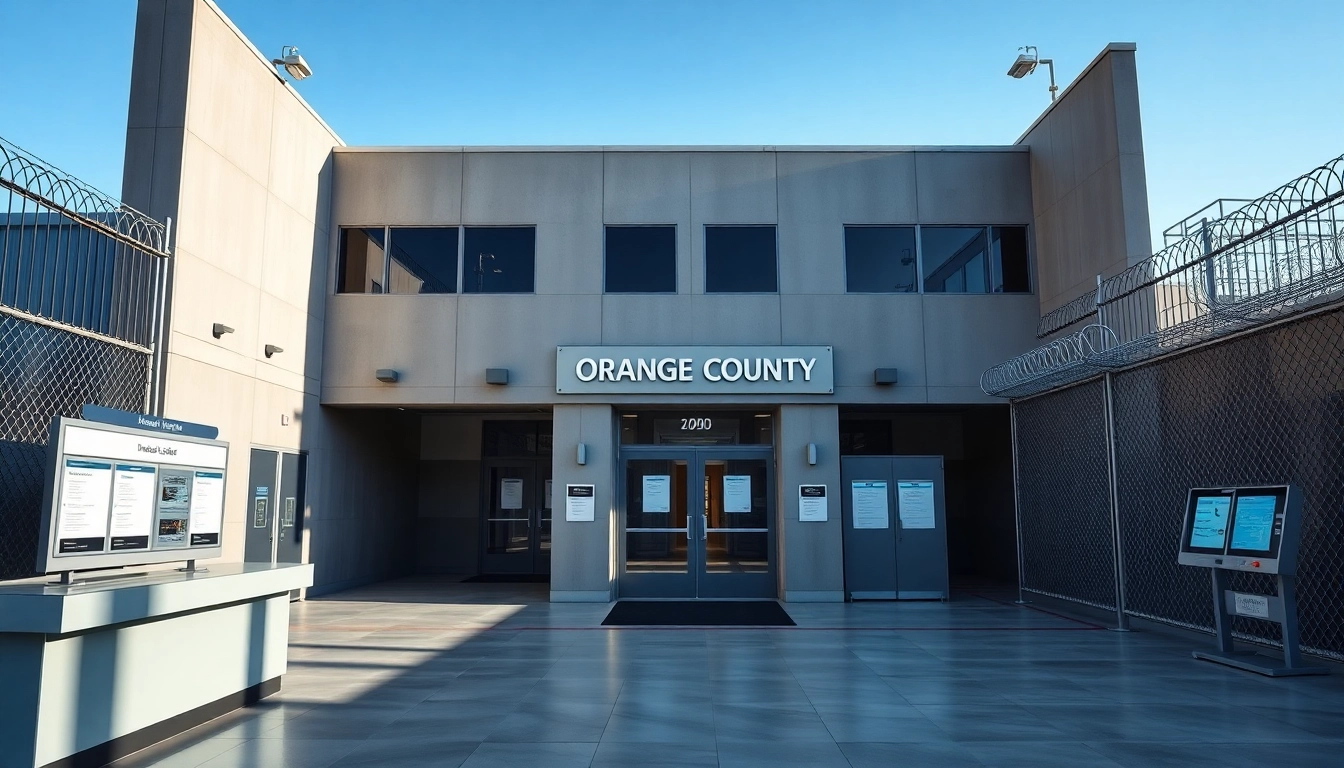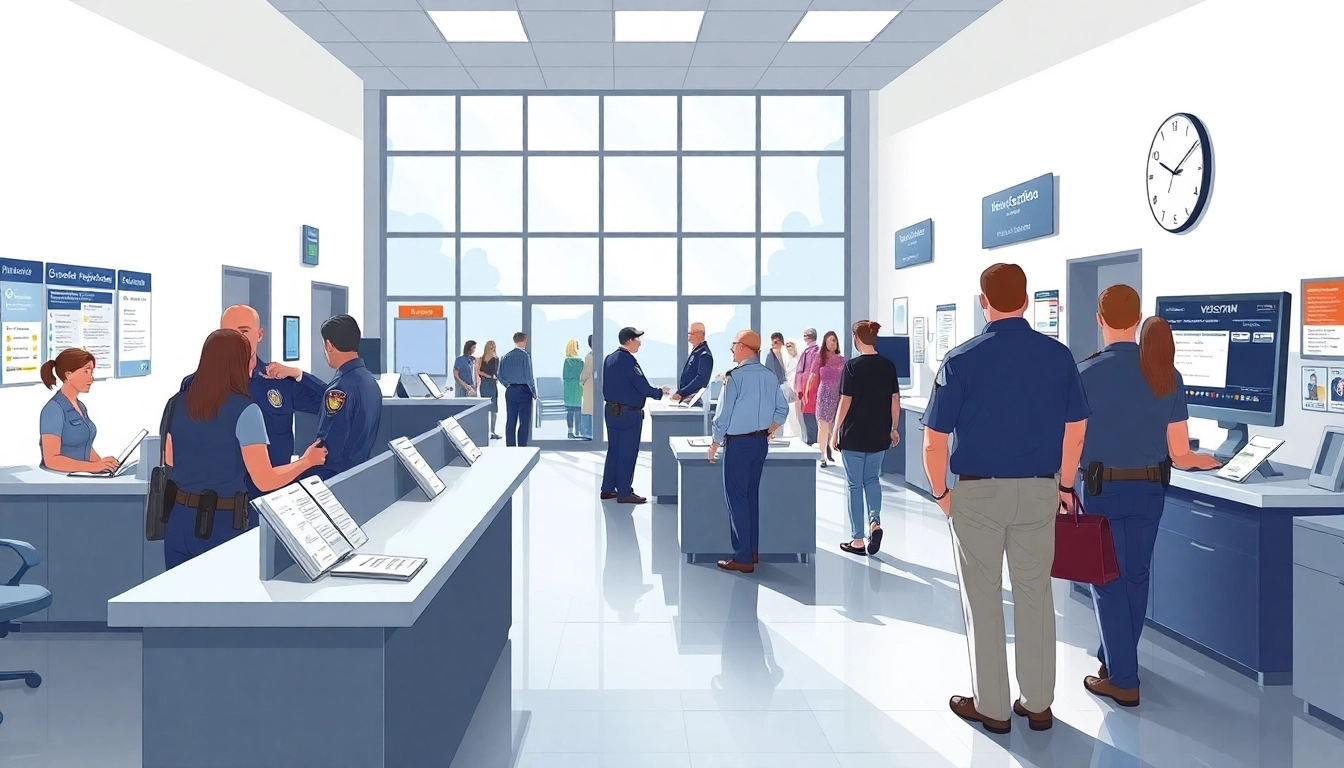Understanding Inmate Information: What You Need to Know
Inmate information is critical for various reasons, whether it’s for individuals seeking details about their loved ones in Orange County’s correctional facilities or researchers analyzing crime and incarceration trends. Knowledge about who is incarcerated, their charges, and their legal rights can empower families and communities. If you’re looking for details regarding whos in jail oc, understanding the information surrounding inmate records is essential.
Types of Inmate Records Available
Inmate records come in several forms, primarily including:
- Booking Records: Containing information about when an individual was detained, the reasons for arrest, and their booking number.
- Court Records: Documents that outline the proceedings and outcomes of the legal cases against inmates.
- Inmate Location Data: This includes information on where an inmate is currently housed, their housing unit, and any movements within the facility.
- Release Information: Data regarding an inmate’s release date, parole eligibility, or transfer to another facility.
These records serve as resources for families, victims, and various organizations involved in legal processes.
How Inmate Records are Maintained
Inmate records are maintained through a collaborative effort by law enforcement agencies, courts, and correctional facilities. Each agency complies with specific regulations regarding the documentation and accessibility of these records. Typically, data is entered into a centralized database upon an inmate’s arrest, allowing for updates as their status changes through hearings, transfers, and releases. Security protocols ensure that sensitive information remains protected while remaining accessible to authorized individuals.
Importance of Accurate Inmate Data
Accurate inmate data is vital for numerous reasons:
- Legal Representation: Attorneys need precise information about their clients to provide effective counsel.
- Family Support: Families rely on accurate information to maintain contact and provide necessary support.
- Public Safety: Understanding trends in incarceration can help law enforcement and community organizations implement effective crime-prevention strategies.
Thus, the importance of maintaining accurate and up-to-date inmate data cannot be overstated.
How to Access Inmate Records
Accessing inmate records in Orange County can be done through several channels, ensuring that individuals have multiple ways to gather information relevant to their needs.
Online Resources for Finding whos in jail oc
Numerous online platforms can provide access to inmate records:
- Official County Websites: Websites like the Orange County Sheriff’s Department and the inmate information system provide access to booking logs and current inmate databases.
- Public Records Databases: Several organized databases compile public records, giving insights into criminal histories and current incarceration status.
- Third-party Lookup Services: While less official, various online services offer inmate lookup functionalities for added convenience.
Online resources can be the fastest method to locate inmate information from the comfort of your home.
Using Public Portals Effectively
When using public portals to find inmate information, be sure to consider the following steps to ensure a successful search:
- Gather Information: Have key data ready, such as the inmate’s full name, date of birth, and any known aliases.
- Utilize Filters: Use filters on the search portal to narrow down results, reducing the time spent scrolling through irrelevant information.
- Check for Updates: Inmate records may change, so regularly check for the latest updates on their status and location.
Maximizing your search strategies will save time and yield more accurate results.
Requesting Information Directly from the Jail
If online options are insufficient, you can contact the jail directly to request specific inmate information. Here’s how:
- Call the Jail: Speak with a representative who can assist with information retrieval.
- In-Person Visits: If permitted, visiting the jail can sometimes provide access to records that are not available online.
- Formal Requests: Consider submitting a formal information request under relevant public records laws if required.
These methods can provide more detailed insights than what may be available online.
Navigating Inmate Communication Options
Communication with inmates can be essential for both the inmates’ mental health and the support systems established by families and friends. Here’s how to navigate the available options.
Phone Call Protocols
Inmates often have access to phone services, but these come with specific protocols:
- Prepaid Accounts: Most facilities require that family members set up prepaid accounts for the inmate to use for phone calls.
- Call Monitoring: Be aware that all calls are usually monitored and recorded for safety and security reasons.
- Limited Duration: Calls may be limited in duration and frequency, making it crucial to maximize communication when possible.
Understanding these protocols helps maintain effective communication without violating facility regulations.
Video Visitation Services
Many correctional facilities now offer video visitation as an additional communication option, enabling families to connect with inmates without needing to travel to the facility:
- Setup Procedures: Users typically need to set up an account with the service provider associated with the facility.
- Scheduling: Video visits often require advance scheduling to ensure that inmates have the time available for the session.
- Quality and Requirements: Ensure you have a reliable internet connection and necessary technology to avoid frustration during the visitation.
Video visitation is increasingly becoming preferred due to added convenience and safety.
Sending Mail to Inmates
Sending mail remains a traditional but vital form of communication:
- Guidelines: Each facility will have specific rules regarding what can and cannot be sent. Be sure to check the particular institution’s mailing guidelines.
- Privacy: Mail may be opened and inspected, so avoid sending restricted items or sensitive personal information.
- Encouragement: Letters can provide essential emotional support to inmates during their incarceration.
Mail serves as a comforting reminder of the outside world, enhancing the morale of inmates.
Understanding Charges and Legal Processes
Knowledge of common charges and the legal processes governing them is fundamental in understanding the scenario of any inmate.
Common Inmate Charges in Orange County
Inmates in Orange County face various charges, reflecting a wide range of offenses:
- Property Crimes: Theft, burglary, and vandalism are frequent charges.
- Violent Crimes: Assault, murder, or domestic violence can lead to serious legal consequences.
- Drug Offenses: Drug possession and trafficking issues are prevalent, impacting many individuals.
- Public Order Crimes: These may include disorderly conduct, loitering, or other offenses that disturb public peace.
A clear understanding of common charges helps family members and friends support inmates through their legal journeys.
The Role of Bail and Bond Information
Bail and bond information is crucial for understanding an inmate’s opportunity for early release:
- Bail Amounts: These are set by a judge based on the severity of the charges and the flight risk of the defendant.
- Types of Bonds: Cash bonds, surety bonds, and property bonds are primary types inmates may utilize.
- Consequences of Not Posting Bail: If bail cannot be posted, the inmate will remain in custody until their court date, which may be a lengthy period.
Understanding bail processes helps families strategize financially and legally regarding their loved ones.
Legal Rights of Inmates
Inmates possess specific legal rights that must be upheld within the correctional system:
- Right to Due Process: Inmates are entitled to fair treatment and legal representation.
- Right to Communicate: They have the right to maintain communication with the outside world, as outlined earlier.
- Right to Health Care: Inmates are entitled to adequate medical care while incarcerated.
It’s vital for families to understand these rights to advocate effectively on behalf of their loved ones.
Staying Updated: Recent Changes in Inmate Management
The field of incarceration and inmate management is continuously evolving, driven by technology and changes in legislation. Staying updated can profoundly impact how families and friends engage with the inmate system.
Technological Advancements in Inmate Tracking
Technological advancements play a pivotal role in inmate tracking and information dissemination:
- Real-Time Updates: Many facilities now utilize software capable of updating inmates’ statuses in real-time, allowing families to get timely information.
- Geolocation Services: Enhanced tracking facilitates greater security measures and better management of inmates.
- Mobile Applications: Some jurisdictions have even developed apps that provide families with quick access to inmate information on their mobile devices.
These advancements generally streamline communication and increase transparency within the system.
Recent Legislative Changes Impacting Inmate Information
Legislative changes frequently affect inmate information protocols, such as:
- Privacy Laws: New regulations may enhance the rights of individuals in custody, affording them more control over their information.
- Easier Access to Public Records: Changes may make it easier for family members and the public to access inmate information to promote transparency.
- Reform Measures: Ongoing discussions around criminal justice reform may affect how information is shared and managed.
Staying informed about these changes enables families to adjust their approaches to supporting their loved ones.
Community Resources for Families of Inmates
Families with loved ones in jail can leverage community resources designed to aid them during challenging times:
- Support Groups: Many communities offer support groups for families, providing emotional assistance and shared experiences.
- Legal Aid Services: Organizations providing free or low-cost legal help can support families navigating the legal system.
- Information Hotlines: Local organizations may maintain hotlines to answer questions and offer guidance to families dealing with incarceration issues.
Pursuing these community resources can help families foster connection and support during difficult periods.



